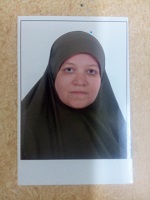BACKGROUND: Poison and poisoning are known since time immemorial. poisons are subtle and silent weapons, which can be easily used without violence and often without a rousing suspicion. Most of the people prefer them for the purpose of suicide leading to peaceful death. OBJECTIVES: The present study aimed at studying the details and characteristics of fatal poisoning in Sohag Governorate from 2002 to 2006.Materials and Methods: This study was conducted as a retrospective research examining cases of medico legal autopsies in Sohag Governorate diagnosed as fatal poisoning (in Sohag Department of Forensic Medicine, Ministry of Justice).All files that recorded poisoning as the manner of death from2002 to 2006 were reviewed. From each file the following information were recorded: Age and sex of the victim, the education and socioeconomic level , residence of both the victim and the assailant, the relationship of the assailant and the victim, type of poisoning and the season.The collected data was analyzed by a data analysis computer program (SPSS v16, SPSS inc.).Results :The total number was 51 cases, 17 cases (33.3%) were males and 34 cases (66.7%) were females. Most cases occurred in young age (66.7%). 41.2% occurred in the second decade and 25.5% in the third decade of life. About 37.3% of cases were students while 29.4% of cases were housewives. (86.3%) of cases were suicidal. the commonest poison used were carbamates (39.3%) followed by organophosphorus compound (25.5 %)Paraphenylenediamine (13.7%) and Organochlorine (3.9%).. The commonest poisons in suicidal cases were carbamates (38.6%) The highest percentage of poisoning was observed in Sohag city (31.4%) followed by Tema (15.7%), Monshaa and Dar- Elsalam (13.7% for each). Maragha (11.8%) Baliana (5.9%), Thata and Gerga (2.0% each).Regarding the occupation of the victims of fatal poisoning students represented the most common occupation of fatal poisoning (37.3%) followed by house wife (29.4%), professional (13,7%), unemployed (9.8%) worker(5.9%)retired and nurse (2% each) A significant statistical difference was observed between the occupation and sex .

